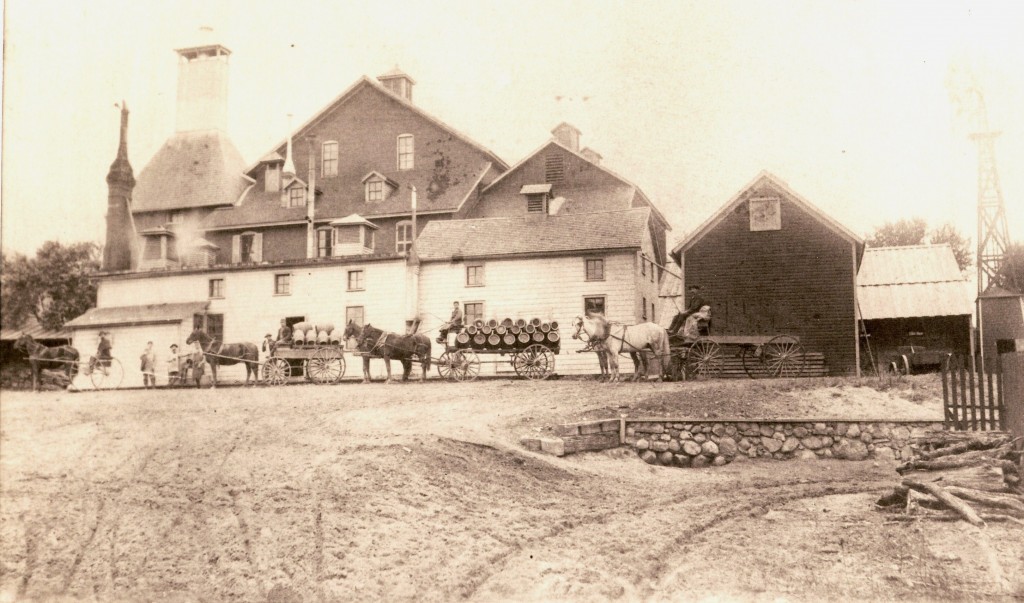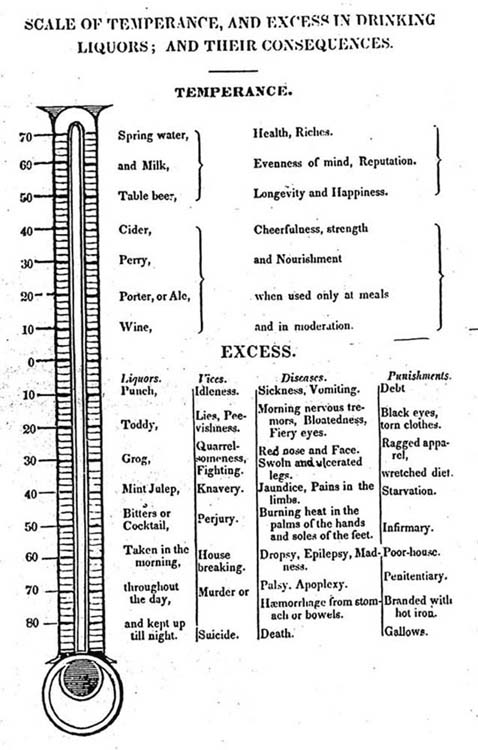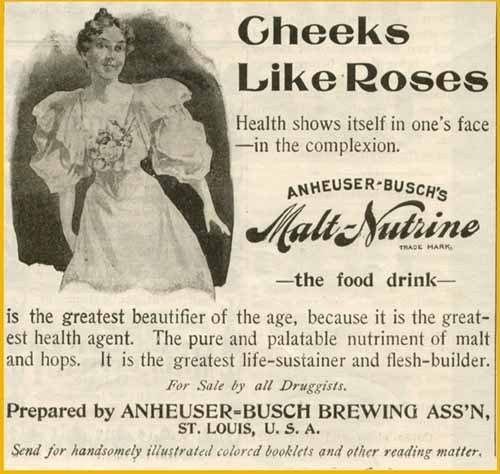Lager, Lymph, Germans and Templars in Manchester -- Part 3 of 6
by Ray Berg and Alan Dyer
Introduction
In the first two parts of this series, we discussed the influx of German immigrants and their rise to economic and political power in Manchester Village in the post-Civil War period. A second area of examination was that of “nativism,” a movement that viewed these immigrants as morally deficient and denounced their failure to adopt American ways. These factors were then examined in the light of the development of lager beer brewing at the Michigan Southern Brewery, and the parallel rise of the temperance movement.
By the mid-1870s, German merchants had achieved a substantial presence in the community, and were beginning to control political matters through their participation on the Village Council and membership in various social organizations. At the same time, violation of liquor laws, which was viewed mainly as a German problem, had resulted in public cries for a moral purification of the village by the local churches and temperance societies. The Manchester Enterprise carried passionate editorial letters and woeful cries of “Our Manchester, What Can Be Done for Thee?”.
We continue in Part 3 with examination of the brewery, the arguments of “purity” and health benefits in alcoholic drinks, the continuing cry for temperance, and how Manchester balanced these elements in the name of economic health.
The Brewery
The Michigan Southern Brewery was located at 606 S. Macomb Street on the south edge of the village. It was constructed by John Baur and opened in December 1872. Over the next five years, the brewery suffered financial problems and underwent several changes of ownership, indicating that it may have been only a marginally profitable business. Certainly, the financial panic of 1873 resulted in a sharp decline in the brewery’s value, following its sale by John Baur in late 1873. Mat Blosser, however, continued to comment favorably, and perhaps too optimistically, on each new owner’s ideas for improvements to increase the company’s profitability.
We pick up the story with Joseph Seckinger, who purchased the brewery in March 1877 from A. C. Torrey, the mortgage holder. Unfortunately, between this date and December 1880, there is little information in the Enterprise, or elsewhere, on the brewery and its new owner. Mat Blosser did note, however, that “Frank Ruck, the proprietor of the Southern Brewery, has began [sic] business in the right way. He subscribed for the ENTERPRISE.” Ruck had purchased the property from Seckinger for $1,200, the lowest price paid since John Baur’s initial sale in 1873 for $11,000. Blosser mentioned on January 27, 1881 that: “The Southern Brewery in this village is making what John calls ‘goot peer’”, and on February 10 that: “Mr. Ruck, proprietor of the southern brewery, has built a new ice house and wagon shed, 18 x 60 feet. Fred. Schaible has the contract for filling it.”
Later that year, on November 17, 1881, the Enterprise reported that: “Frank Ruck, proprietor of the Southern brewery, has had a large photograph taken of the building and surroundings, which will be used for advertising purposes. Davis did the job, and of course, it is a good one.” This photo is believed to be the one shown in Figure 6 below, the only known photograph of the brewery during its operation.
Figure 6 – The Michigan Southern Brewery in 1881 at 606 S. Macomb St.
Although Ruck was known for making “a very good quality of beer”, his ownership of the brewery was short lived. On May 11, 1882, he sold the business to Jacob Reichert for $2,500, double his original purchase price, but not an unreasonable sum considering the amount of money he had invested in improvements. The Reichert sale did not survive an implied mortgage foreclosure, for on October 16, 1884, the Enterprise reported that: “Frank Ruck has sold the southern brewery in this village to John Koch, a large brewer of Detroit, and that Mr. K. intends to put the building in repair and begin the manufacture of beer. He says that a good beer can be made here as anywhere. He has rented his brewery in Detroit for $3,000 a year, and being a man of wide experience and ample means, we have no doubt but that he will make a success of the business here.”
John Koch would preside over what appear to have been the most profitable years of the brewery.
Temperance and Lymph
The temperance movement in Manchester during the early 1880s was exemplified in the local chapter of The International Order of Good Templars (IOGT), whose “sole purpose is to deliver the land and the world from the curse of intemperance.” The earliest officers of the Manchester IOGT included G. R. Palmer; Mrs. J. J. Clarkson; E. C. Olney; Mrs. I. L. Clarkson; Mrs. Merriman; Mrs. Bessac; Rev. J. W. Scott; J. L. Greenman; Mrs. Dawes; Mrs. Allen; George Dickerson; Clara Cushman; and Capt. Dawes. All good “Englishmen and women”, incorporating a likely mix of true anti-alcoholic sentiments with perhaps some nativism concern over the growing influence of the German population and its like of lager beer.
Temperance was firmly rooted in the Protestant faith, with most meetings held in local churches, often in concert with other denominations. For these adherents, the alcohol question was a moral one that did not allow a person to be anti-temperance and a true Christian. Nativism also played a part in the struggle. In Manchester, this prejudice focused on the German immigrants who tended to isolate themselves from the dominant English institutions by preserving their language and maintaining their own schools, societies, and, for a short time, a bank. These borders would begin to blur as the 20th century approached. In reality, ideas about nativism and morality most likely overlapped, leaving few people with a single motivation that turned them toward temperance.
The outright prohibition of alcohol was not much of a factor at this time, not because it failed to attract adherents, but because of the futility inherent in its goal. The Templars, who were no exception to this rule, sought to convince the drinking public to practice moderation through various appeals, as was noted in Part 2 of this article. One way of accomplishing this goal was through the publication of guides that rated the “purity” of alcoholic drinks (Figure 7). These guides attempted to encourage a temperate life through the use of alcohol that was on the high end of the health and nourishment scale.
Figure 7 – Templars’ “Scale of Health and Nourishment”
Temperance advocates often utilized the concept of “purity” when referring to alcoholic drinks, and separated “table beer” (low-alcohol beer), fermented apple cider, perry (fermented pear cider) and ale from the hard liquors (Figure 7). The purity of the water involved in processing various drinks also played a role in a beverage’s acceptance. Reference was often made to the term “lymph”, which is an archaic word derived from the Latin “lympha,” or “water,” and referred to the flow of pure water from a spring. It also referred to the sap of a plant, the nourishing, “pure” fluid that carried nutrients throughout the plant. The word “lymph” in modern medicine refers to the fluid that distributes white blood cells and nutrients throughout the body, and removes toxins. Drinking several cups of pure water every day is encouraged by some medical experts as a way of maintaining the human lymphatic system.
In the late 19th century, the study of the human lymphatic system and the role of body lymph was in its infancy. It was postulated that drinking “pure” fluids, including mild alcoholic drinks made from pure water sources such as flowing springs, was beneficial to the human well-being. As holistic medical practices began to replace the harsh purgatives of patent medicines, this message reached a growing audience. Therefore, distillers and brewers often highlighted the health benefit of the pure water sources they used to ferment their grain and grape-based alcoholic beverages.
This idea was first expressed in Manchester at a much earlier date by Barnabas Case. In 1838, when opponents of his new distillery attacked him for the harmful nature of his business, he responded that the absolute “purity of the River Raisin water” he drew upon to produce his liquor guaranteed a healthy product. The Michigan Southern Brewery, half a century later, made the same claim for the water it drew from a nearby spring. Major alcoholic beverage producers also promoted the “health” benefits of drinks made from fermented malt and grains. Anheuser-Busch created Malt-Nutrine, marketing it as a pure and palatable, “life-sustaining and flesh-building” food drink, particularly for nursing mothers. Figure 8 shows one of their advertisements.
Figure 8 – Purity and Health in Alcoholic Beverages
In Manchester, at least, the temperance movement focused its attention on saloon owners and education of the general public, rather than on the brewers. The October 16, 1884 Manchester Enterprise ran a temperance column titled “A Word to the Saloon Keeper,” that epitomizes the movement’s basic message:
Ask why the saloon keeper continues in the business. You get a license and should be able to conduct business “unmolested”, you think. But then you sell during illegal hours to “irresponsible persons.” Are you not aware of the misery, suffering, and crime that results from your actions? If you had “the hearts you claimed to have, if you were the gentlemen you claim to be” you would quit the business.
Why continue? Because it is profitable and easy. It takes little money, or muscle, or brain, to stock a bar-room, sit behind it, smoke a cigar, and rake in the dimes and dollars from hard worked men, earned by the sweat of their brows. Selling liquor is one step above prostitution and the two go hand in hand. Honorable members of the community may have to deal with you in business, politics, etc., but “your business is not respectable, you have a too evil name and character, and [they] would not tolerate you to associate with their wives and children.”
A February 5, 1885 column by the local Women’s Christian Temperance Union addressed what it saw as the movement’s biggest problem: a continual harangue against Manchester’s Germans that had overshadowed the more reasoned temperance message that the movement had to offer, not only for the Germans, but for all village residents.
An Insult to the Germans
“It has been often said by those whose circumference of head is small, and depth of brain is shallow, that if beer drinking was stopped here ‘the grass would soon grow in the streets.’ We do not desire just now to show the absurdity to put it in its true light, viz; a deliberate insult to the germans. The german does not bring his produce to Manchester because he can get a better price for his goods, and can purchase cheaper here than elsewhere, or because he is nearer to this village, or has no friends here, oh, no. In the minds and mouths of these ones all they come for is to guzzle beer, soak themselves in beer, become drunkards and sots. What a depraved set these germans must be; what low miserable motives you ascribe to them; no exceptions are made whatever. If every respectable german does not consider this an insult, and derogatory to his name and character, and resent it indignantly, then he is unworthy of his nationality, and unfit for citizenship. It is asserting falsehood, and giving him a blacker name then they really deserve.”
Not withstanding these two articles, organized temperance societies struggled to stay active in Manchester through the late 1880s and early 1890s. Several chapters formed with enthusiasm, then faded away as business owners and other leading male citizens avoided commitment to the cause for fear of damage to the local economy and the loss of an occasional good drink. Women seemed to do most of the work in church-based gatherings. In August 1884, a temperance petition was circulated in Manchester that met with great resistance. According to reports in the Enterprise, many people refused to even read it, fearing that saloon licenses would be revoked, the prosperity of the village ruined, and every man forced to give up his drink. Once people were aware of its content, many claimed they would have had no objection to its proposals for they were “mild.” It asked only that the laws be enforced against saloons, and was in no way a proposal for complete prohibition. Prohibition itself would rise as the pre-dominant anti-alcohol movement in the 1890s.
Part 4 will pick up the continued growth of the Michigan Southern Brewery, and the resurgence of prohibition forces.













You must be logged in to post a comment Login